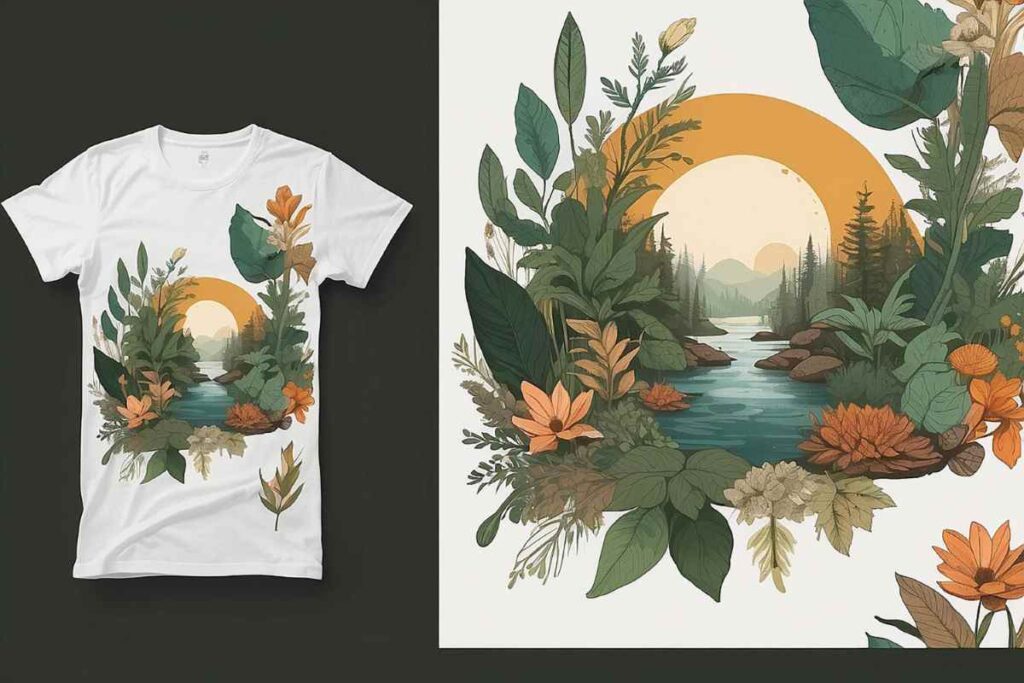When it comes to printing techniques, the debate between Nature Transfers and Screen Printing is a hot topic among enthusiasts and professionals alike. Both methods offer unique advantages and cater to different needs, but which one truly stands out? In this article, we will delve into the intricacies of Nature Transfers and Screen Printing, exploring their processes, benefits, and ideal applications. By the end, you will have a clearer understanding of which method is better suited for your specific printing projects.
As we navigate through the comparison, you will learn about the environmental impact of each technique, a crucial factor in today’s eco-conscious world. Nature Transfers, known for their sustainable approach, contrasts sharply with the traditional methods of Screen Printing, which often involve more resources and chemicals. We will also discuss the quality of prints produced by each method, examining factors such as durability, vibrancy, and detail. This insight will help you make an informed decision based on your priorities.
Furthermore, we will highlight the cost-effectiveness of both techniques, providing you with a comprehensive overview of what to expect in terms of budget. Whether you are a small business owner looking to make a mark or a hobbyist eager to explore new printing avenues, understanding these differences is essential. So, stay with us as we uncover the nuances of Nature Transfers and Screen Printing, and discover which method reigns supreme for your printing needs!
When it comes to customizing apparel and other materials, two popular methods stand out: nature transfers and screen printing. Each technique has its unique advantages and disadvantages, making it essential to understand their differences to choose the best option for your needs.
Advantages of Nature Transfers
Nature transfers, also known as heat transfers, offer several benefits that make them an attractive option for many businesses and individuals. One of the primary advantages is the ability to produce vibrant, high-quality images with intricate details. This method allows for full-color designs, which can be particularly appealing for brands looking to make a strong visual impact.
Additionally, nature transfers are versatile and can be applied to various materials, including cotton, polyester, and blends. This flexibility makes them suitable for a wide range of products, from t-shirts to bags. Furthermore, the application process is relatively straightforward, requiring only a heat press, which can be a cost-effective solution for small businesses or hobbyists.
Benefits of Screen Printing
Screen printing is a time-tested method that has been widely used for decades. One of its most significant advantages is durability; screen-printed designs are known for their longevity and resistance to fading, even after multiple washes. This makes screen printing an excellent choice for items that will see heavy use, such as uniforms or promotional merchandise.
Moreover, screen printing can be more cost-effective for large production runs. Once the screens are created, the process allows for quick and efficient printing, which can lead to lower costs per unit. This efficiency is particularly beneficial for businesses looking to produce large quantities of items without sacrificing quality.
Quality Comparison: Nature Transfers vs. Screen Printing
When comparing the quality of nature transfers and screen printing, several factors come into play. Nature transfers excel in producing detailed, full-color images, making them ideal for designs that require intricate graphics or photographs. However, the quality can vary based on the transfer material and application process.
On the other hand, screen printing typically offers a more textured finish, which can add depth to the design. While it may not achieve the same level of detail as nature transfers, screen printing is known for its vibrant colors and solid coverage. Ultimately, the choice between the two methods will depend on the specific design requirements and the desired aesthetic.
Cost Considerations for Each Method
Cost is a crucial factor when deciding between nature transfers and screen printing. Nature transfers generally have lower initial setup costs, making them an attractive option for small orders or one-off designs. However, the cost per unit can increase significantly for larger quantities, as each transfer must be printed individually.
In contrast, screen printing has higher upfront costs due to the creation of screens, but the cost per unit decreases with larger production runs. This makes screen printing a more economical choice for bulk orders. Businesses should carefully evaluate their needs and budget to determine which method aligns best with their financial goals.
Environmental Impact of Each Technique
As sustainability becomes increasingly important, the environmental impact of printing methods is a significant consideration. Nature transfers often use eco-friendly inks and materials, making them a more sustainable option for environmentally conscious consumers. Additionally, the process generates less waste compared to traditional methods.
Screen printing, while effective, can involve the use of chemicals and inks that may not be environmentally friendly. However, many screen printing companies are now adopting sustainable practices, such as using water-based inks and recycling materials. It’s essential for consumers to research and choose providers that prioritize eco-friendly practices in their production processes.
Final Thoughts: Choosing the Right Method for Your Needs
Ultimately, the choice between nature transfers and screen printing depends on various factors, including design complexity, order size, budget, and environmental considerations. Nature transfers are ideal for detailed, colorful designs and smaller orders, while screen printing excels in durability and cost-effectiveness for larger runs.
By carefully evaluating your specific needs and priorities, you can make an informed decision that aligns with your goals, ensuring that your custom products meet your expectations in quality and sustainability.
| Criteria | Nature Transfers | Screen Printing |
|---|---|---|
| Definition | A method that uses heat and pressure to transfer designs onto various surfaces. | A traditional printing technique that uses a mesh screen to transfer ink onto a substrate. |
| Quality | High-quality, vibrant colors with fine details. | Good quality, but may lack detail in complex designs. |
| Durability | Highly durable and resistant to fading and cracking. | Durable, but can fade over time, especially with frequent washing. |
| Cost | Generally higher initial costs due to materials and equipment. | Lower initial costs, but can become expensive for small runs due to setup fees. |
| Setup Time | Quick setup, ideal for small batches. | Longer setup time, especially for multi-color designs. |
| Design Complexity | Can handle complex designs and gradients easily. | Best for simple designs; complex designs require more screens. |
| Environmental Impact | Can be more eco-friendly with the use of water-based inks. | Often uses plastisol inks, which can be harmful to the environment. |
| Best Use Cases | Ideal for custom apparel, promotional items, and detailed graphics. | Best for bulk orders, simple designs, and traditional merchandise. |


